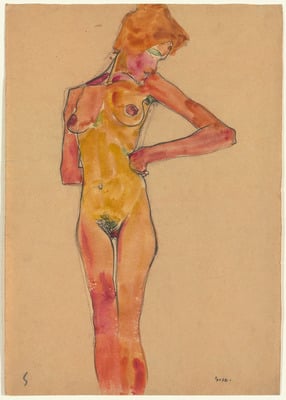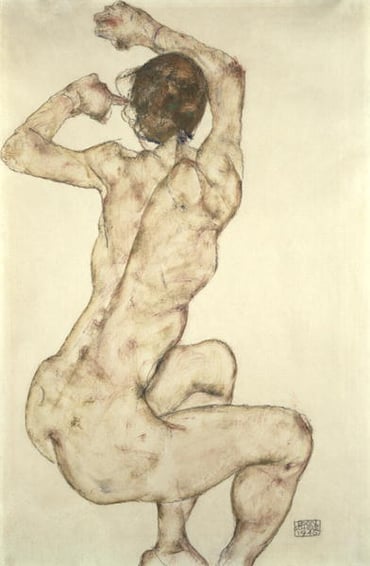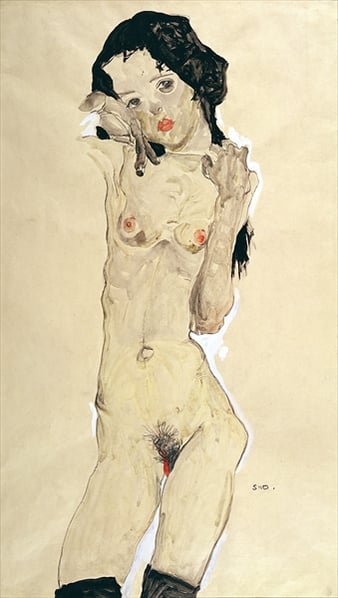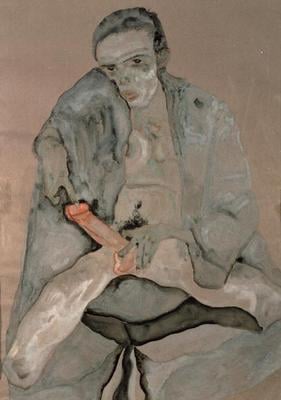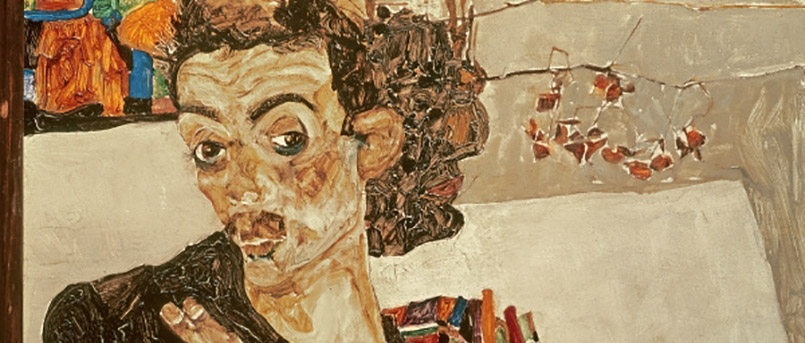
100 years without Egon Schiele
‘All beautiful and noble qualities have been united in me’, claimed Egon Schiele, the centenary of whose death in 1918 is fast approaching. Others have criticised Schiele’s work as grotesque, disturbing and pornographic. An early exponent of the expressionist movement, Schiele’s style is characterised by distorted nudes and autobiographical themes, with such a prolific output of self-portraits as to rival Picasso.
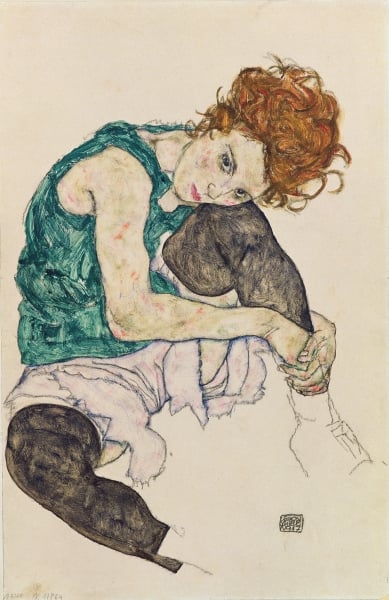
Seated Woman with Bent Knee, 1917 by Schiele, Egon (1890-1918); Narodni Galerie, Prague, Czech Republic
About the artist
Egon was born in Tulin, Lower Austria on 12th June 1890. It has been claimed that he displayed controversial sexual impulses even as a young boy, taking an incestuous interest in his younger sister Gertrude. In 1906, Egon went to the Akademie der Bildenden Kunste (Academy of Fine Arts) in Vienna, but left after three years because of the frustration of having to abide by his tutor’s conservative style, as well as his exciting new career in the Viennese art world.
Eager to gain recognition for his unique style, Schiele sought out eminent erotic painter Gustav Klimt, who took the young artist under his wing, introducing him to patrons and setting up exhibitions. Although Schiele’s early work mimicked that of Klimt’s, the protégé soon developed his own brand, combining Klimt’s overt eroticism with emaciated figures in contorted positions.
Nudes
A common trope of Schiele’s work is his veneration of unconventional ideals of beauty in nudity. Deformed bodies, obscene elongations and sexual openness prevail in his work; despite virulent criticism, he maintained that ‘erotic works of art are also sacred’. Finding it difficult to convince the patrons and gallery impresarios, however, in 1911 Schiele retreated to his mother’s birthplace, Krumau in Czech Bohemia. The picturesque scenery and simple lifestyle suited him after the bitter politics of Viennese art circles, yet after a few months Schiele was evicted by the locals for employing the town’s teenagers to model naked. Controversy followed controversy, when, living in Neulengbach in 1912, Schiele was arrested on allegations of seducing a girl under the age of consent. This charge was eventually dropped, but the crime of displaying erotic images to children kept the artist imprisoned for a month.
Portraits
‘Schiele’s explorations in portraiture were refracted through a turn-of-the-century crisis in European masculine identity […] that worked to undermine middle-class males’ sense of power and self-esteem’ (Gerald N. Izenburg). Schiele’s early career is characterised by a large number of self-portraits, many of which were labelled obscene and depraved pornography.
Yet in his late twenties, the artist seems to reach more of a sexual stability, adding a strong layer of emotional intensity to his portraiture. This style is exemplified in his 1918 work ‘The Family’, in which Schiele depicts himself as the father, crouching protectively over the mother, who protects their child. The figures are naked, but they are not overtly sexual, nor are their bodies frighteningly distorted. The themes here are artistic creation, decay and rebirth, not outlandish sexual expression.
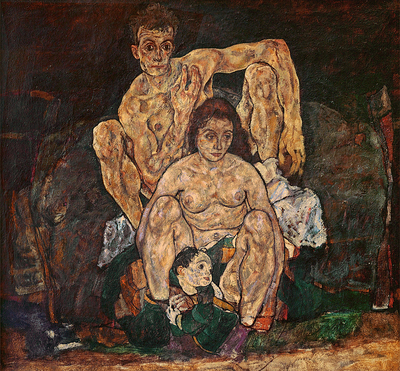 The Family (1918) Schiele, Egon (1890-1918); Galerie Belvedere, Vienna, Austria
The Family (1918) Schiele, Egon (1890-1918); Galerie Belvedere, Vienna, Austria
Legacy
On 31 October 1918, Schiele succumbed to the same Spanish Flu which had taken his pregnant wife, Edith, three days earlier. In just 28 years, Schiele had left an indelible mark on the modern art world, as he claimed himself: ‘I shall be the fruit which leaves eternal vitality behind even after its decay’.
Numerous films and novels have taken Schiele’s tumultuous life as inspiration, an interesting example being Mario Vargas Llosa’s 1997 novel ‘The Notebooks of Don Rigoberto’, in which a character is seduced and morally corrupted by Schiele’s work.
Schiele’s artwork frequently sells for exceptional amounts, for example in 2011 his ‘Houses with Colourful Laundry’ went for $40.1 million at Sotheby’s.
From June to September 2018, the Belvedere Museum in Vienna is honouring Schiele with an exhibition of its large collection of his oil paintings.
Like what you see? Get in touch with your local Bridgeman office for any image research or licensing queries:
North and South America: nysales@bridgemanimages.com

